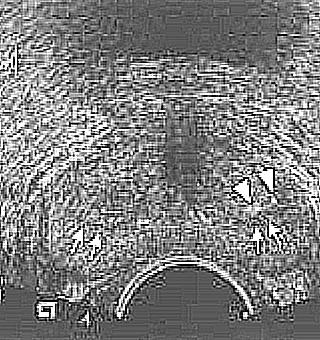Home >
Erectile Dysfunction >
What are diffuse changes in the prostate and how do they threaten
What are diffuse changes in the prostate and how do they threaten?

Diffuse changes are detected in prostate pathologies that develop in representatives of different age groups. The following causes of violations of the cellular structure are distinguished:
- Long-term inflammation of an organ - such pathologies are most often caused by infectious pathogens such as gonococci, Trichomonas, chlamydia, ureaplasma.
- Violation of microcirculation in the gland, leading to oxygen deficiency, deterioration of tissue trophism.
- Metabolic disorders in cells.
- The replacement of epithelial tissues by fibrous tissues with age.
- Oncological processes, detection of metastases in the gland.
In pathology, the prostate parenchyma is damaged, the structure of the organ changes. Violation of the passage of metabolic processes leads to thickening of the walls, an increase in the size of the prostate, a change in its shape, and the replacement of healthy cells with atypical ones. The proliferation of connective tissue fibers causes an active or sluggish adhesive process.
Occurring Diffuse changes in the prostate are caused by the accumulation of lymphocyte cells, macrophages, toxic products in the organ, which are formed during tissue breakdown
After the age of forty, the production of 5-a-reductase, which is involved in the conversion of testosterone into active dihydrotestosterone and estrogen, gradually increases, under the influence of which the glandular epithelium of the prostate is replaced by connective tissue.
Causes of disorder
Diffuse changes in the prostate parenchyma develop under the influence of the following factors:
- Age-related changes - doctors consider this reason the main risk factor. After the age of forty, men experience a gradual suppression of testosterone production and testicular atrophy.
- Infectious inflammation of the urinary organs.
- Parasitic infections.
- Chemotherapy and radiation used in the treatment of malignant neoplasms.
- Use of medications - drugs that have a similar side effect include decongestants, anticholinergics, and antidepressants.
- Endocrine pathologies - we are talking about a violation of the functions of the pituitary gland and thyroid gland.
- Frequent consumption of alcoholic beverages.
Diffuse changes in the prostate gland are caused by age-related atrophy of the testicles and a decrease in the amount of testosterone they produce. The reasons also include exposure to infectious agents of diseases of the genitourinary organs, taking a number of medications.
Forms of pathology
The following types of violations are distinguished
- Hypoplasia - occurs in young men of puberty, before they reach the age of sixteen or eighteen. Changes are associated with insufficient development of the prostate (thinness of the walls, small size). Underdevelopment of the organ determines the eunuch type of a man. Pathology is diagnosed by ultrasound of the gland and determining the content of hormones.
- Hyperplasia - an increase in the number of epithelial cells due to proliferation, the formation of nodules. It is also called adenoma, which in most cases develops as a complication of Chronic prostatitis. The benign nature of neoplasms is manifested in the absence of metastasis to neighboring organs.
- Atrophy - the cause is a violation of the production of hormones that affect the state of the reproductive system. In the presence of severe pathologies of the testes, the prostate gradually dies.
- Dysplasia is the most severe and most common type of diffuse changes. The basis of the violation is the appearance of atypical cells, which leads to tissue modification. There are mild, moderate and severe degrees of dysplasia. The first two types, most often, develop as a result of a long-term chronic form of prostatitis, which is accompanied by swelling and can lead to an abscess. The third degree is regarded as a precancerous condition, indicating a high probability of developing adenocarcinoma of the prostate.
How is the diagnosis carried out?
Structural changes in the prostate gland are detected during ultrasound. The state and structure of tissues is determined by their echogenicity, or acoustic density:
- Isoechogenicity - a gray image is clearly visible on the monitor, it is determined in the norm.
- Hypoechogenicity - dark gray image. It indicates the presence of an acute form of prostatitis, swelling, calcification.
- Hyperechogenicity - white spots indicate chronic inflammation, the presence of calculi.
- Anechogenicity - a black spot means the presence of a cyst or abscess (in this case, combined with hypoechogenicity).
The choice of a therapeutic regimen depends on the disease that caused diffuse changes.To make an accurate diagnosis, when pathological foci are detected by ultrasound, additional examinations are carried out: transrectal ultrasound of the prostate, computed tomography, MRI, laboratory blood tests and prostatic secretions.
Methods of therapy
Medical prescriptions depend on the diagnosis. Chronic prostatitis requires complex treatment that combines medication and physiotherapy. Acute inflammation of the prostate is treated in the hospital with medication and with the help of surgery. Surgical treatment (transurethral resection) is performed if there are stones in the organ.
Neoplasms are surgically removed from the prostate gland, and in the case of an oncological process, further chemotherapy and radiotherapy is indicated.



























